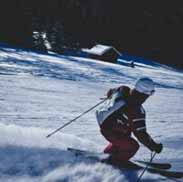AP Biology Chapter 53: Population Ecology – Flashcards
Unlock all answers in this set
Unlock answersquestion
What two pieces of data are needed to mathematically determine density?
answer
Number of organisms and area of habitat
question
Density
answer
Number of individuals per unit area
question
Dispersion
answer
The pattern of spacing of individuals
question
Formula N=mn/x n is _____.
answer
Number of second sampling.
question
Formula N=mn/x s is _____.
answer
Number released in first sampling.
question
Formula N=mn/x x is _____.
answer
Number of marked individuals in second sampling.
question
Explain the impact of immigration and emigration on population density.
answer
They alter the density of populations and increase gene flow between populations.
question
Clumped dispersion pattern
answer
Animals group around food (social animals).
question
Uniform dispersion pattern
answer
Animals are dispersed evenly with aggressive territoralism.
question
Random dispersion pattern
answer
Organisms are randomly dispersed, just where they land.
question
Cohort
answer
A group of individuals of the same age.
question
Population statistic that demographers have a particular interest in?
answer
Birth and death rates (helps create a life table).
question
Survivorship curve I (one)
answer
Most individuals live to older age. Small number of offspring. Lots of parental care.
question
Survivorship curve II (two)
answer
Individuals live and die at consistent rate. Medium number of offspring.
question
Survivorship curve III (three)
answer
Many individuals die during first stages of life but those that survive live long. Large number of offspring. No parenting.
question
What does a reproductive table show?
answer
Age specific summary of reproductive rates in a population. (Measured by reproductive rates of a cohort.)
question
On what is the life history of an organism based?
answer
The traits that affect an organism's schedule of reproduction and survival from birth to death.
question
What three variables form the life history of a species?
answer
Age of reproduction How often an organism reproduces How many offspring per reproductive episode
question
Semelparity
answer
Single reproductive episode before death (release eggs) can wait for right conditions, release a lot survival rate of offspring is low.
question
Iteroparity
answer
Multiple reproductive cycles over the course of its lifetime more dependable environments.
question
Two critical factors for determining if a species will evolve toward semelparity or iteroparity.
answer
Survival rate of offspring Likelihood that the adult will survive to reproduce again
question
Explain the effect of offspring care on parental survival in kestrels.
answer
There appears to be a negative correlation between brood enlargements and parental survival.
question
What is the advantage to using per capita birth and death rates rather than just the raw numbers of births and deaths?
answer
Per capita gives average of the number of offspring per individual and number of deaths per unit of time.
question
What will the per capita birth and death rates be if a population is demonstrating zero population growth?
answer
They will be equal.
question
What does it mean for a population to be in exponential population growth?
answer
A population that is growing without limitation of resources.
question
What are two examples of conditions that might lead to exponential population growth in natural populations?
answer
Excess of food and water (resources) Free to reproduce as often as possible
question
What is carrying capacity?
answer
Maximum population size that an environment can sustain.
question
What are six examples of limiting resources that can influence carrying capacity?
answer
Space Water Food Mate availability Shelter Predator
question
In the logistic population growth model, the per capita rate of increase approaches zero as the _____ _____ is reached.
answer
Carrying capacity
question
K-selection
answer
Density-dependent selection, have few offspring, parent heavily
question
R-selection
answer
Density-independent, lots of babies, no parents
question
Density-independent regulation
answer
Provides regulation by reducing birth rate and increasing death rates (competition for food)
question
Density-dependent regulation
answer
Regulation of population regardless of population density (lightning strikes and there is a fire)
question
Explain negative feedback's role in the regulation of populations.
answer
It keeps the population at or near carrying capacity through affecting birth and death rates in a large (close to K) population.
question
Negative feedback mechanism: Competition for resources
answer
Organisms compete for food and water (Mice have a limited insect supply)
question
Negative feedback mechanism: Territoriality
answer
Organisms compete for space by fiercely defending an area (Mountain lions have large territories)
question
Negative feedback mechanism: Disease
answer
Diseases increase death rates by killing weak organisms (Bats have fungus)
question
Negative feedback mechanism: Predation
answer
Predators control prey population and vice versa (Number of foxes and rabbits in field fluctuate together)
question
Negative feedback mechanism: Toxic wastes
answer
Some organisms (bacteria/yeast) make toxic wastes that kill some population (Yeast makes alcohol which builds up until death)
question
Negative feedback mechanism: Intrinsic factors
answer
Hormonal/physiological changes in animals based on food (If women are nutrient deficient they stop menstruating)
question
Importance of immigration and emigration in metapopulations.
answer
A metapopulation is when two or more populations are linked, it is important to have constant immigration and emigration.
question
Human population growth since 1650.
answer
We have been exponentially growing until lately. We have slowed down. (2.2% in 1962, 1.2% in 2009)
question
Demographic transition
answer
Movement from high birth and death rates to low (This has happened in both Mexico and Sweden since 1750)
question
Afghanistan
answer
Large younger population (Prediction: explosive growth rate)
question
United States
answer
Even number from 0-55 (Prediction: grow slowly)
question
Italy
answer
Less children than adults (Prediction: no growth)
question
Why do infant mortality and life expectancy vary so greatly between certain countries?
answer
They reflect a quality of life and parental choices.
question
Can the world's population an ecological footprint that is currently the average American's footprint?
answer
The average American footprint is 10 and it is unsustainable at 1.7 (Over using resources!)



